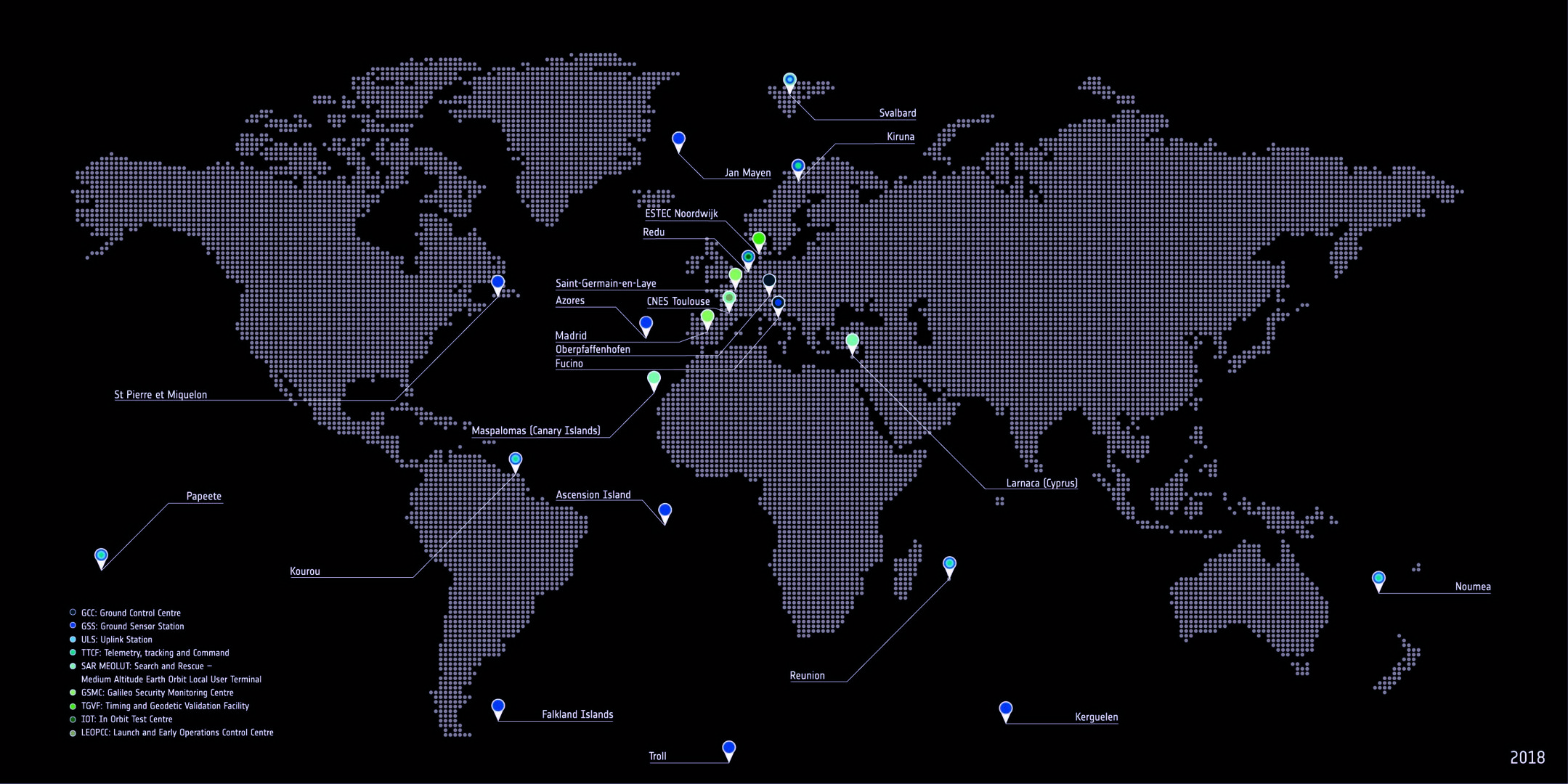25 February 2021. For the first time, technicians at Spaceopal receive an alert from the EU Space Surveillance and Tracking (EUSST) consortium, which is responsible for monitoring and tracking objects in orbit to protect the European space infrastructure. The debris of an Ariane 4 rocket launched in 1989 are on collision course with GSAT0219, a satellite belonging to Europe's Galileo global positioning constellation: impact predicted for 7 March.
“After informing the European GNSS Agency (GSA), the European agency responsible for Galileo, we began continuously monitoring the collision probability while our operational teams immediately set about working on a possible manoeuvring strategy”, says Pierlugi Fedele, who has been at Telespazio since 1997 and is currently the Galileo Service Provision Manager at Spaceopal, a joint venture between Telespazio itself and the German space agency DLR.
In its role as Galileo Service Operator (GSOp), Spaceopal is responsible for managing the entire Galileo infrastructure, including its orbiting satellites and the ground segment, through two control centres: one at Fucino in Italy and one at Oberpfaffenhofen, near Munich, Germany.
Spaceopal is the largest satellite navigation operator and, as well as ensuring the provision of Galileo services throughout the world, takes care of the entire constellation management process, including problems such as that presented by the wreckage of the Ariane 4.
“In the days following the alert from EUSTT – continues Fedele – we developed our manoeuvring strategy, assessing every detail of taking the satellite out of service and then reactivating it”. But it was on 5 March that the situation came to a head.
Based on new forecasts and updated data, the risk of a collision was still judged to be “not acceptable”. At that point, and having finalised the manoeuvre strategy, the GSA authorised Spaceopal to go ahead with the so-called Collision Avoidance Maneuver (CAM). That same day the satellite was suspended from service and the day after, 6 March, the CAM was performed successfully, moving the spacecraft away from its “standard” orbit.
“The manoeuvre did not entail any interruption to Galileo services – says Fedele - the system continued to provide these thanks to a constellation of 26 satellites, 22 of which were operational. There is therefore a sufficient level of redundancy and the temporary suspension of a signal from one of the satellites has no impact on users, who are kept up-to-date with all detailed developments by publication of the relevant NAGU (Notice Advisory to Galileo Users) on www.gsc-europa.eu”.
Finally, between 9 and 19 March, the satellite was put back into service following two so-called station keeping manoeuvres, which restored it to its operational orbit. In this case too, Galileo users were notified of the operation (NAGU).
“Cooperation between all the players involved, whether institutional or industrial, was essential for the complete success of the manoeuvre, carried out by a Galileo satellite for the first time”, explains Fedele.
“Spaceopal, in particular, successfully managed the entire process: announcing the first warning, continuously monitoring the impact probability, coordinating the operational teams in drawing up the manoeuvre strategy, performing the risk analysis close to the event, and also providing all inputs needed to make the final decision to go ahead with the manoeuvre".

Galileo's Ground Segment includes, in addition to the two control centers in Italy and Germany, numerous facilities and antennas around the world. Photo: ESA
An increasingly frequent problem?
On 2 September 2019, the European Space Agency's Aeolus satellite found itself in a partly similar situation to that of GSAT0219.
In that case, however, the object on collision course with the European craft was a commercial satellite with manoeuvring capability, not an inert rocket fragment. The two satellites, moreover, were in Low Earth Orbit (LEO, up to around 1,000 kilometres in altitude) rather than the Medium Earth Orbit (MEO, around 22,000 kilometres) of the majority of navigation satellites, including Galileo.
Regardless of these differences, however, it is now generally agreed by the space agencies themselves that the problem of space debris is becoming ever-more pressing.
“Although MEO currently presents less problems in terms of possible collisions, above all if compared with geostationary (GEO) and LEO orbits, as the number of space launches grows we expect an exponential increase in debris created by the launcher stages, which are left floating in space at that precise level of orbit”, explains Fedele. “The number of potential collisions between debris and satellites will tend to grow, and operations like that performed on GSAT0219 will unfortunately become more frequent”, he concludes.
This is precisely why Telespazio is working hard to offer institutional and commercial operators an increasingly full suite of Space Domain Awareness services.
Drawing on the satellite operations expertise it has acquired over the years, Telespazio is offering an integrated approach based on Space Traffic Management and Space Intelligence services.
In the first case, these services aim to optimise orbital traffic management in such a way as to minimise the risk of collisions, by analogy with air traffic control systems.
In the second, the processing and fusion of increasingly advanced information even enables space object characterisation, including for those that are non-collaborative. Finally, the additional use of information from space-based sensors will certainly improve the performance of these services in terms of their responsiveness and precision.

